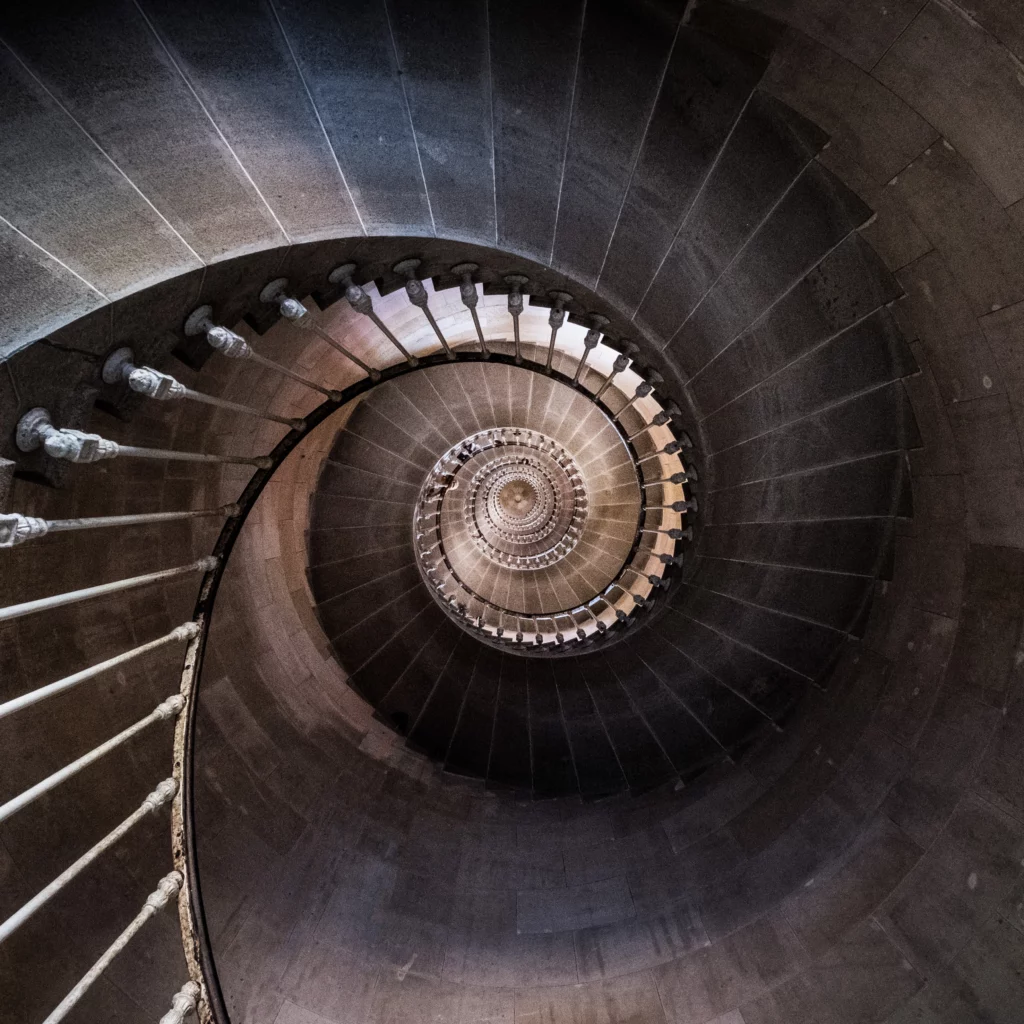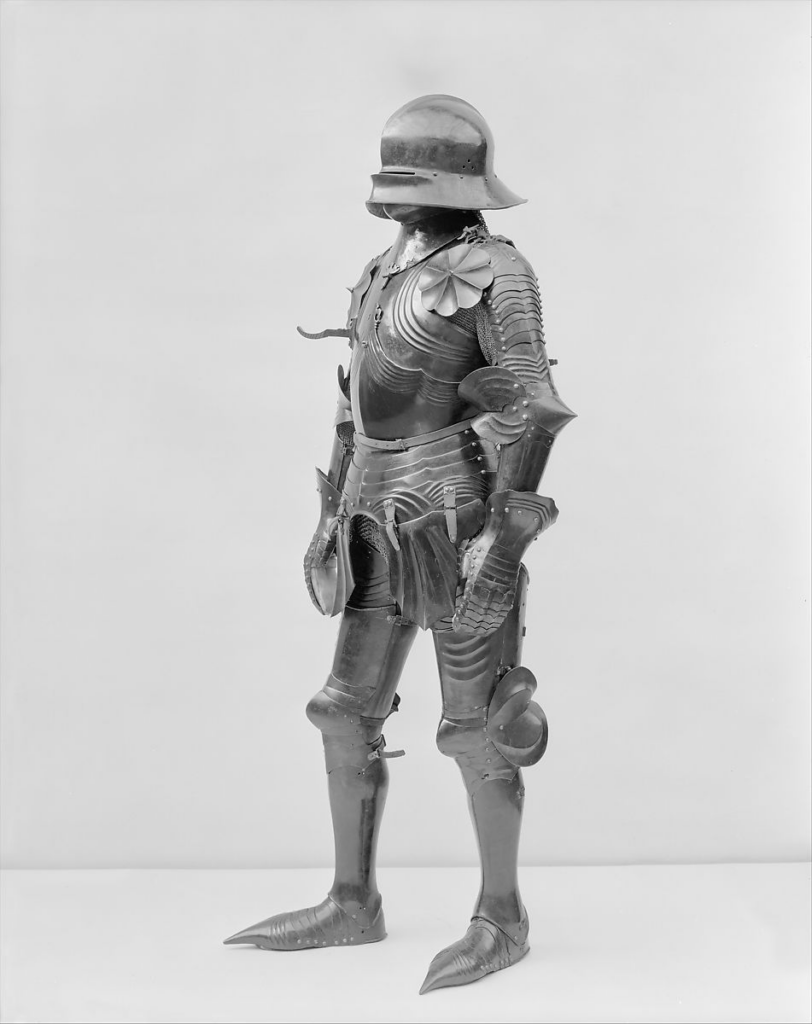The best part of reading stories set in medieval times was dreaming of walking down the spiral staircases making a princess-like entrance or racing up the tower to slay a dragon. Well, at least that’s what the storybooks always detailed. But in reality, why did they make those damn stairs so narrow and spiraling? It […]
The post The History Behind Spiral Staircases first appeared on History In Memes.
]]>The best part of reading stories set in medieval times was dreaming of walking down the spiral staircases making a princess-like entrance or racing up the tower to slay a dragon. Well, at least that’s what the storybooks always detailed. But in reality, why did they make those damn stairs so narrow and spiraling? It sounds hard to maneuver with all that armor and a sword in your hand!
Most staircases in medieval castles were built to be extremely narrow and spiraling in a clockwise direction. But why? What was going on in these architects’ minds when they built these?
Why Were There Spiral Staircases in Medieval Times?
Well, since medieval castles were built mainly as fortifications, staircases were designed to make it extremely difficult for enemy combatants to fight their way up. Most soldiers were right-handed, so they would need to round each curve of the inner wall before attempting to strike, inevitably exposing themselves in the process.
This basically all means that the defenders coming down the stairs would be able to get clear shots at their opponents who were struggling to wield their weapon. This also helped them be less concerned with hitting walls or remaining unprotected from incoming strikes.
What Did the Spiraling Staircases Look Like?
The clockwise spiral stairs were very narrow with sharp turns. They were intentionally poorly lit and built to be uneven. This made it even more difficult for the attackers to gain any sort of balance or momentum during their fight to capture the castle.
How Defending Soldiers Used the Spiral Staircases
The clockwise spiral staircase also allowed the defenders to use the inner wall as a partial shield and easily allow them to swing their weapon without being hindered by the curvature of the outer wall. Making the stairs very narrow with sharp turns made it increasingly difficult for invaders to launch a massive attack all at one time.
Think about it: When people fight in an open field or on a straight staircase, all the invaders and defenders can race towards each other at once. But with the spiral staircase being so narrow, invaders had to climb them one soldier at a time. This also made it easy for the defenders to set up on the top of the stairs with crossbows and launch an air attack. This would happen all while the invaders struggled to climb the stairs quickly and shield themselves from fire.
These stairs were built to give the defending castle’s soldiers a home-field advantage while also making it extremely difficult for the attackers to mauver smoothly.
Game of Thrones makes invaders mounting these stairs appear to be effortless. In actuality, invaders wouldn’t be able to see very well, would be tripping up the inconsistent steps, and couldn’t swing their swords well (unless they were southpaws).
We see that architects and building structures play a major role in successfully defending a base. And these setups are intentional and just as calculated as the way the troops are positioned.
Are Spiral Staircases Used Today?
Nowadays, spiral staircases are incorporated in various buildings, not just castles. From churches, to towers, to tall buildings, and even homes. But the purpose of making the staircase spiral has since changed from the medieval days.
Now, the spiral staircase design is more for aesthetics or to save space. Spiral staircases are mainly associated with kings, castles and wealth, but there is a truly fascinating history lesson behind them about architectural design that is purposeful and strategic.

The post The History Behind Spiral Staircases first appeared on History In Memes.
]]>We all know that medieval armor was designed to protect knights in battle. But did you know that it was also surprisingly flexible? Thanks to a combination of innovative design and skilled craftsmanship, gothic armor from the 15th century was both strong and flexible, allowing knights to move freely and fight effectively. Put on Little […]
The post The Surprising Flexibility of 15th Century Gothic Armor first appeared on History In Memes.
]]>We all know that medieval armor was designed to protect knights in battle. But did you know that it was also surprisingly flexible? Thanks to a combination of innovative design and skilled craftsmanship, gothic armor from the 15th century was both strong and flexible, allowing knights to move freely and fight effectively.
Put on Little Dark Age and let’s take a closer look at the design of this flexible gothic armor!
This gothic armor originates from German-speaking areas of Europe during the 15th century. The armor got coined as “gothic” because the armor style was similar to the gothic style of the architecture built. Gothic suits have distinct design features that set it apart from other armor. It has a more symmetrical, slender, and elegant look than other armor during that time period.
Unlike earlier types of armor, which were designed primarily for strength, gothic armor was designed with both strength and flexibility in mind. One of the key features of gothic armor was the use of lames, or narrow metal plates, which were riveted together to form a flexible shell. This allowed for a much greater range of motion than previous types of armor while still providing ample protection.
In addition to lames, gothic armor also featured articulated joints, which further increased its flexibility. Articulated joints are basically hinges that allow different parts of the armor to move independently from one another. This means that a knight wearing gothic armor could swing his arms and legs freely without having to worry about the rest of his armor getting in the way.
The next time you’re watching a medieval movie or TV show and you see a knight clanking around in his heavy armor, remember that it wasn’t always like that! Thanks to the innovative design of 15th century gothic armor, knights were able to move much more freely than ever before. So next time you’re feeling weighed down by your own personal armor (whether that be your job, your relationships, etc.), just remember that it could be worse — you could be wearing full plate mail!
Not only can you still buy this style of armor online, but it is also up for display at museums like THE MET.

Want to read about more unique and innovative battle tools? Click here to read about the inflatable tanks WW2 soldiers used to defeat the Nazis!
The post The Surprising Flexibility of 15th Century Gothic Armor first appeared on History In Memes.
]]>